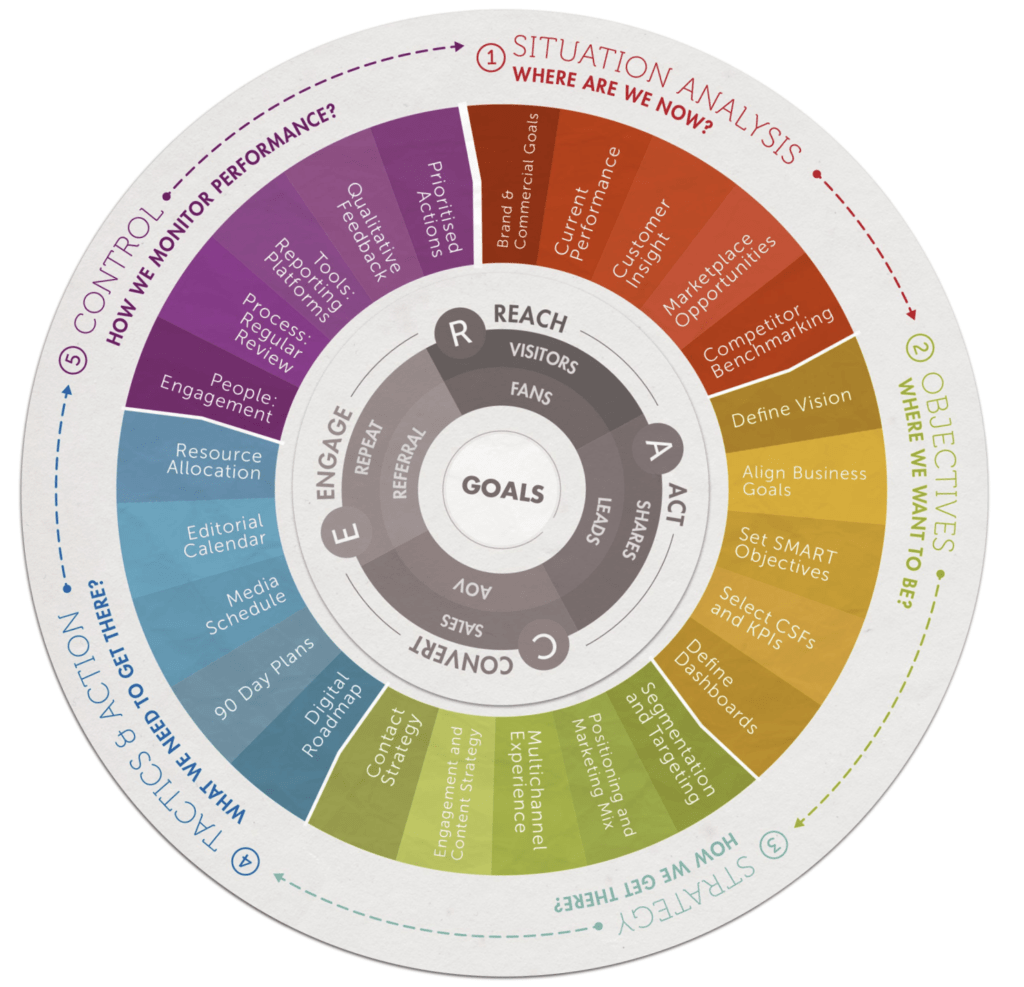
SOSTAC - A planning model for successful marketing campaigns - Emptor
SOSTAC® is a planning model, originally developed in the 1990s to help with marketing planning by PR Smith, who is a British consultant.
SOSTAC® stands for:
Situation Analysis
Helps establish a benchmark of the competition: Where are we today?
- Brand and business objectives
- Current performance or results
- Customer knowledge
- Market opportunities
- Competitive benchmark
Objectives
Establishes Where do we want to be?
- Define a vision
- Align business objectives
- Set SMART (Specific, Measurable, Achievable, Realistic, Time-bound) objectives
- Select critical success factors
- Define dashboards
Strategy
Defines How do we get there?
- Segmentation and targeting
- Positioning and marketing mix
- Omnichannel experience
- Content strategy
Tactics and Actions
What do we need to get there?
- Digital roadmap
- 90-day plans
- Media scheduling
- Editorial calendars
- Resource allocation
Control
How do we monitor performance? OKRs and KPIs
- Objective attainment
- Periodic reviews
- Reporting platforms (Executive dashboards)
- Qualitative feedback
- Quantitative feedback
Through SOSTAC® and the RACE Framework, you can ask, for example:
- Where might you be weak?
- Did we not complete a proper situation analysis?
- Are our objectives SMART?
- Do we have the right strategy? Tactics?
- Are we controlling performance through analysis?
We recommend reading: Value Proposition: The Key to Closing More Sales
An infographic applying SOSTAC® to digital marketing.
1. Use SOSTAC® to review your process
Before seeing how SOSTAC® applies in each step to create a marketing plan, the first advice is to use it to review your planning process and how you manage your marketing.
Ask yourself critically about the activities your organization is good at. Perhaps you spend too much or too little time reviewing the situation. Maybe you’re not so good at setting SMART objectives, or developing strategies to support them, or the control stage of evaluating how effective your strategies and tactics are and adjusting them?
2. Get the right balance in SOSTAC®
Often, too much time is spent on analysis within a plan and not enough on strategy setting.
So, as a general rule, this is how your content balance might look:
- S (20%)
- O (5%)
- S (45%)
- T (30%)
Total = 100%
3. Summarize your situation in the form of a TOWS SWOT matrix
To focus the situation analysis, the so-called TOWS form of SWOT analysis is recommended. This helps to integrate SWOT with strategy.
TOWS Matrix
4. Make your objectives SMART and link them to your analysis/control process
Since digital marketing is so measurable, it makes sense to be as specific as possible about your objectives by developing a funnel conversion model. You should also set specific objectives in Google Analytics.
But it’s worth thinking about the full range of objectives indicated by the 5Ss.
5. Integrate the different elements of your SWOT
There is often not a good flow in relation to the sections of a plan. To help with this, it is recommended to summarize your entire SOSTAC® plan in a table that integrates strategies, situation, objectives and tactics.
Integrating a model that gives structure to your marketing strategy and goes down to the most detailed control, allows you to track from the high level to the most specific detail.
Tell us what model or flywheel you implement in your marketing campaigns? Let us know and share it in the comments.